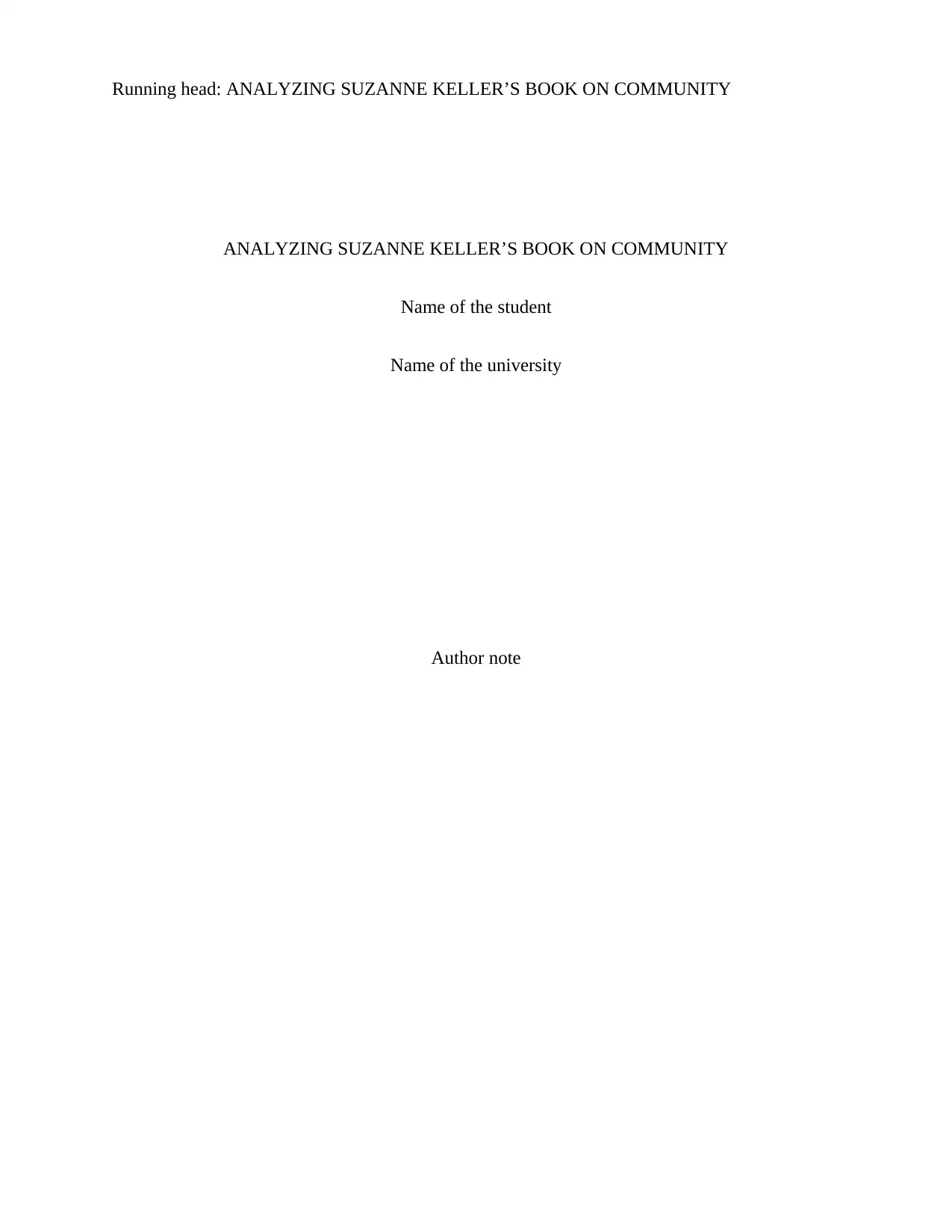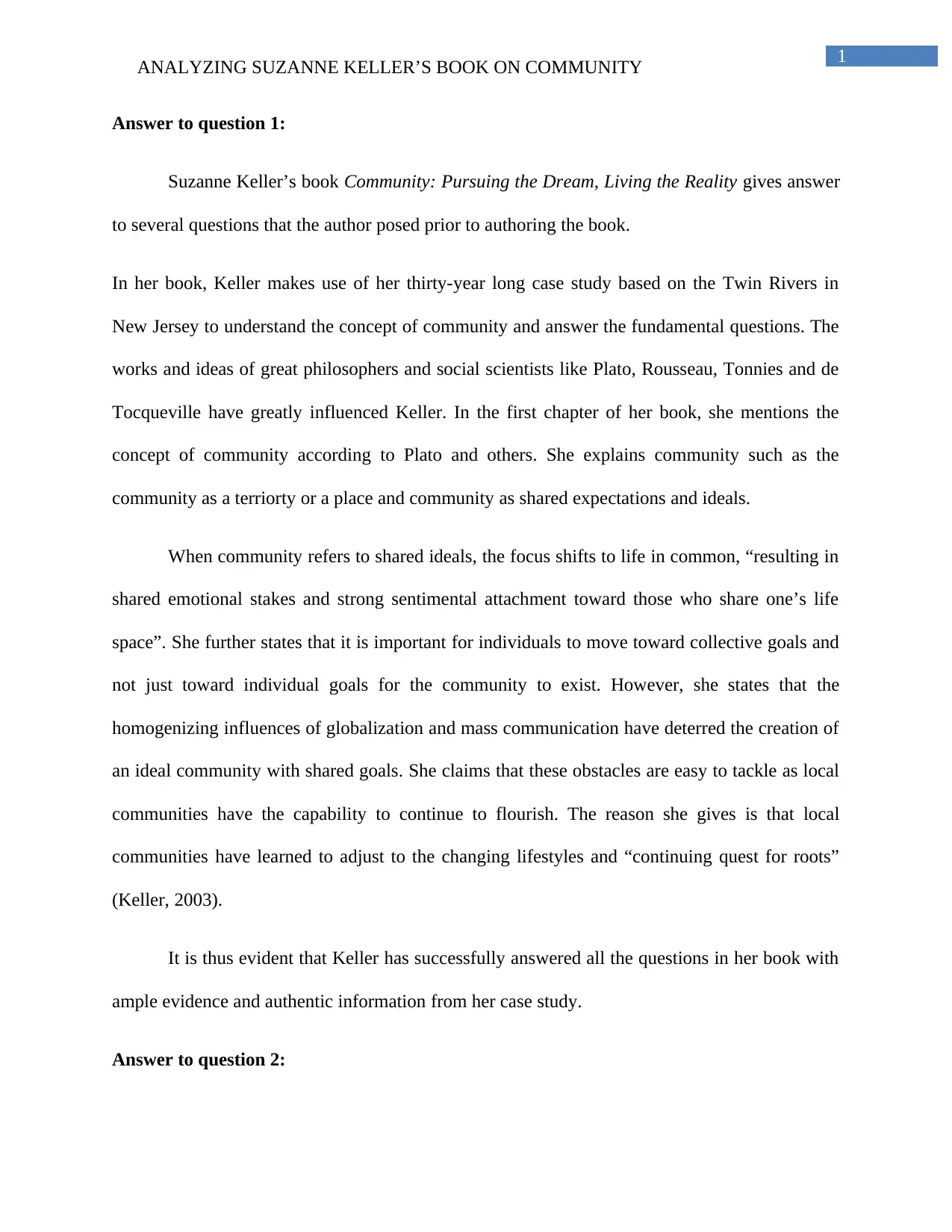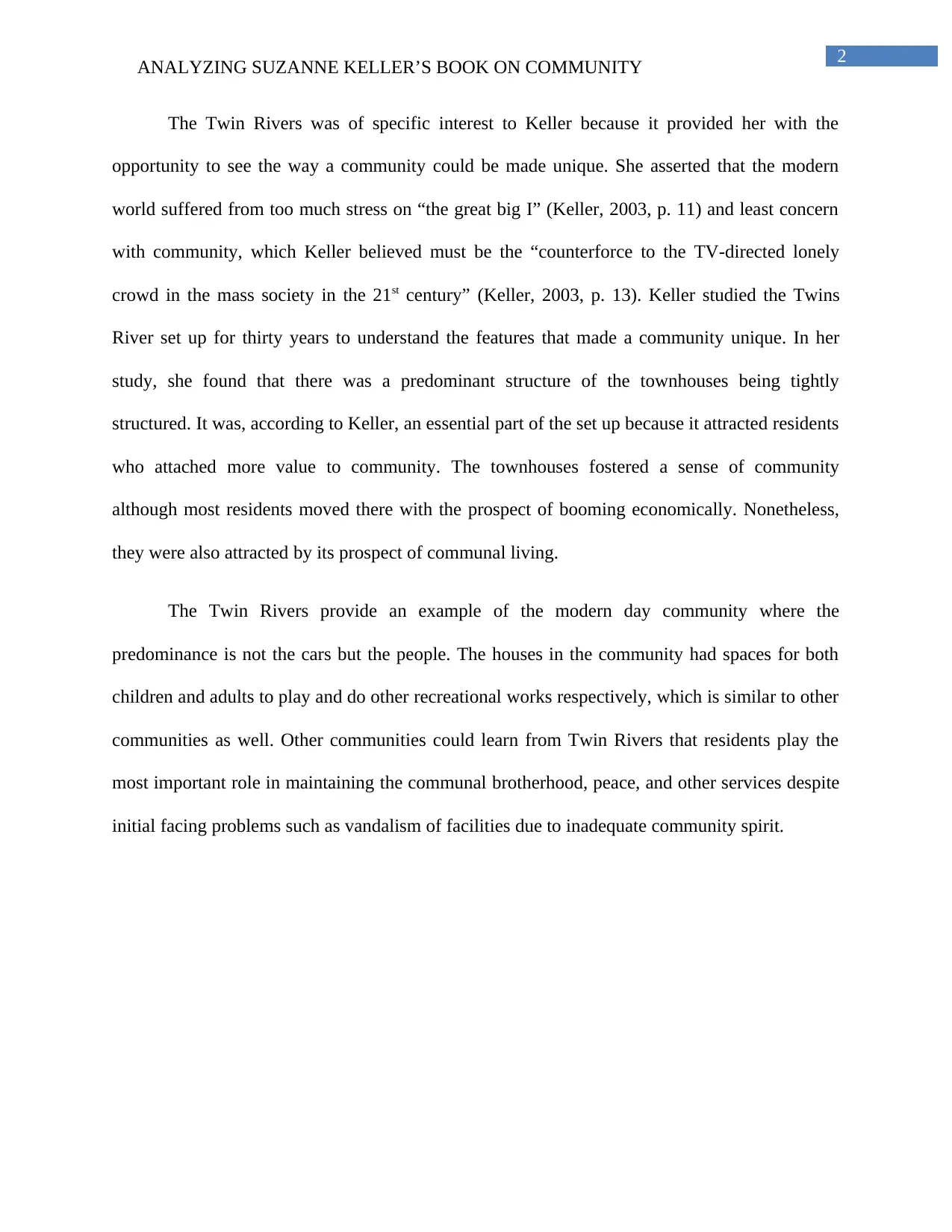Exploring Community Dynamics: An Analysis of Suzanne Keller's Book
VerifiedAdded on 2023/05/28
|4
|661
|476
Essay
AI Summary
This essay provides an analysis of Suzanne Keller's book, 'Community: Pursuing the Dream, Living the Reality,' focusing on her thirty-year case study of Twin Rivers in New Jersey. The analysis explores Keller's perspective on community as both a territory and a set of shared ideals, influenced by thinkers like Plato and Rousseau. It highlights Keller's argument that while globalization poses challenges to community building, local communities have the resilience to adapt and flourish. The essay further examines how the unique structure of Twin Rivers, with its tightly structured townhouses, fostered a sense of community among residents, emphasizing the importance of communal brotherhood and resident involvement in maintaining community spirit. It concludes by suggesting that other communities can learn from Twin Rivers' example in prioritizing people and creating spaces for both children and adults, thereby fostering a strong sense of community.
1 out of 4





![[object Object]](/_next/static/media/star-bottom.7253800d.svg)